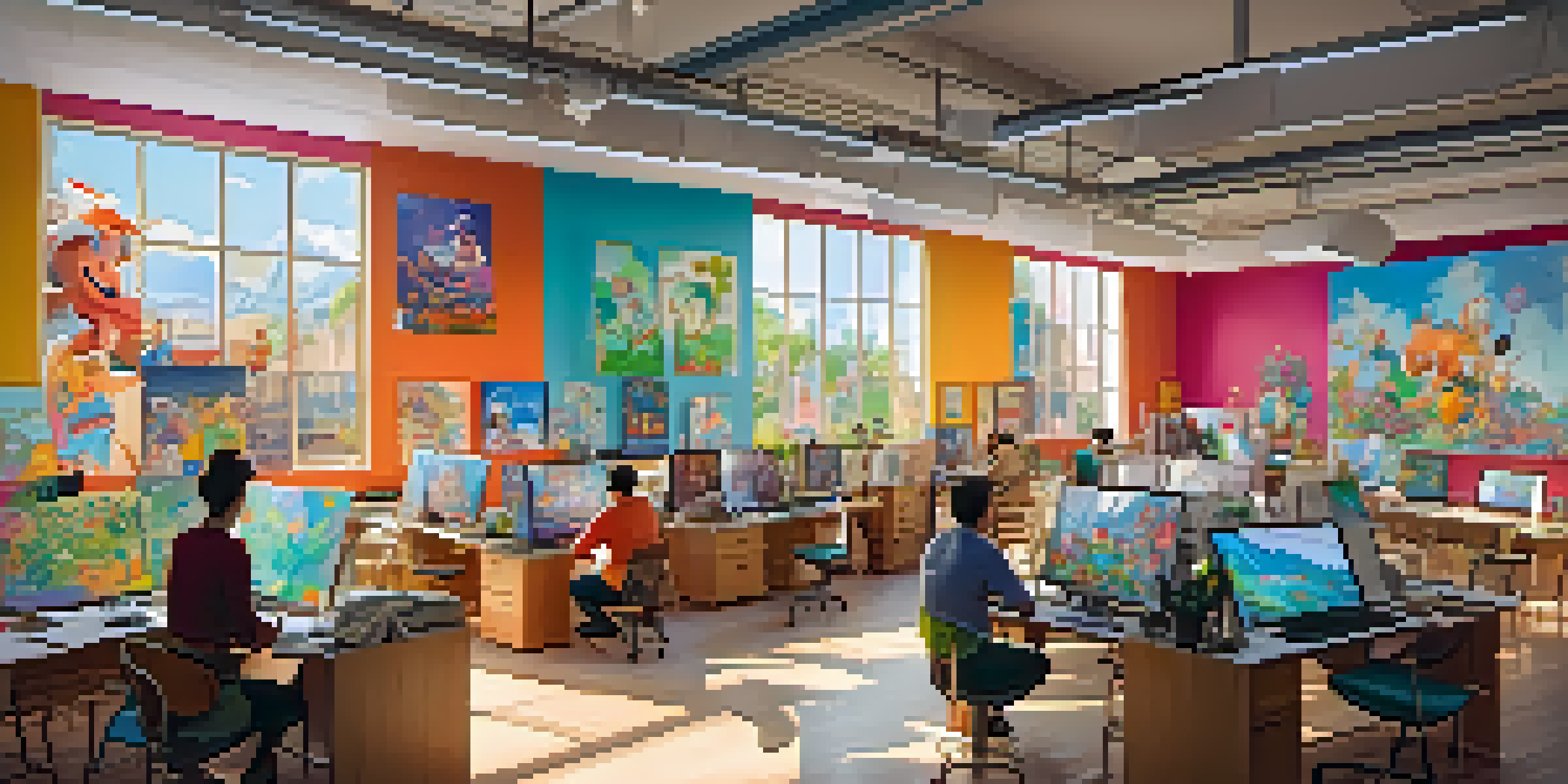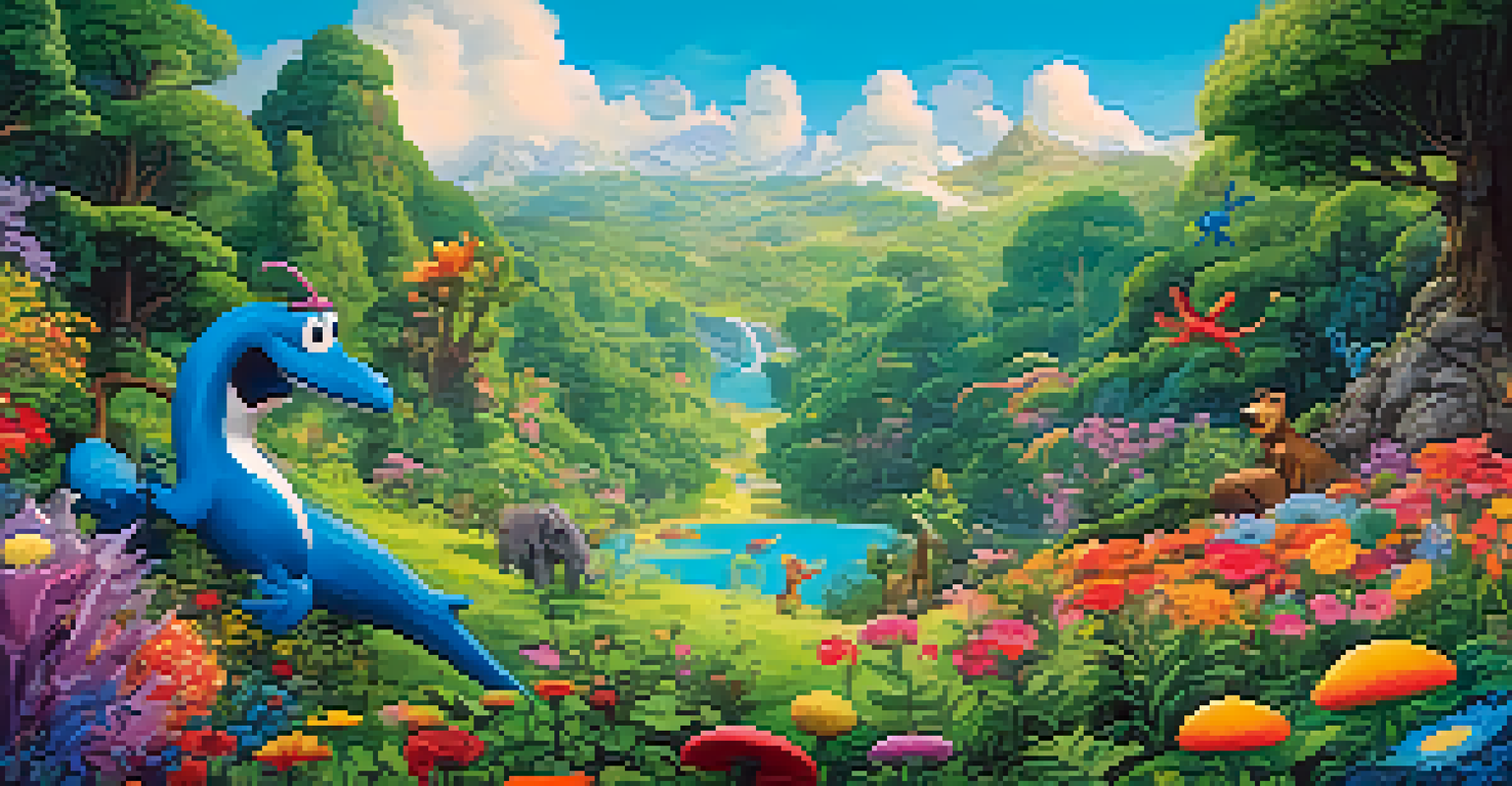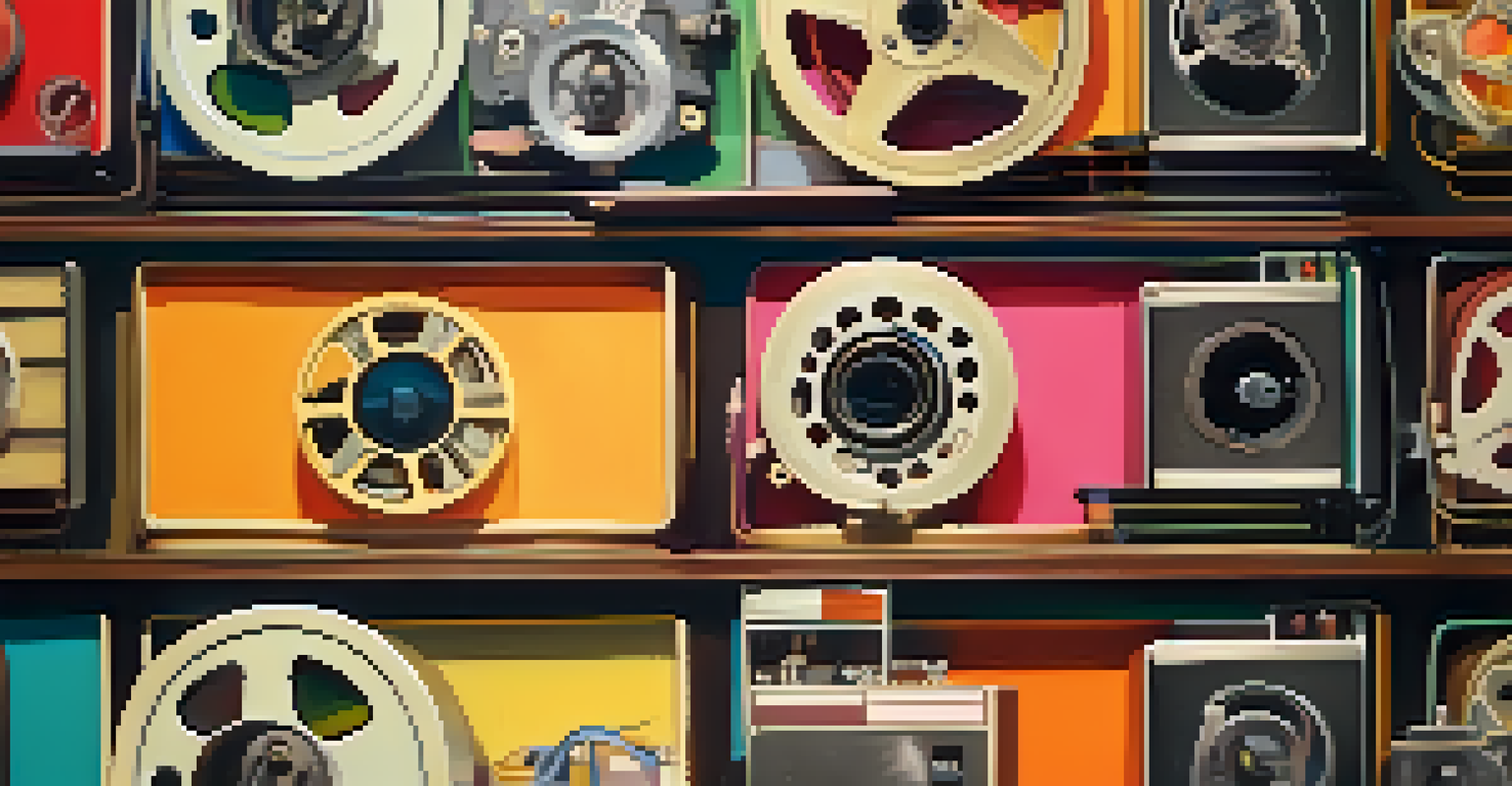Technicolor and Animation: A Vibrant New Era in Film

The Birth of Technicolor: A New Vision for Film
In the early 20th century, filmmakers were limited to black-and-white imagery, which constrained their storytelling potential. The introduction of Technicolor in the 1920s revolutionized the film industry, offering a vivid palette that brought stories to life. With the ability to showcase vibrant colors, filmmakers could evoke emotions and create immersive worlds in ways that had never been possible before.
Color is a power which directly influences the soul.
Technicolor's first major success came with the film 'Wings' in 1927, which featured stunning color sequences that captivated audiences. This innovation was not just a technical achievement but also a cultural shift, allowing audiences to experience narratives in a more engaging and visually stimulating manner. As more studios adopted Technicolor, the demand for colorful storytelling grew, paving the way for its integration into animation.
The process of Technicolor involved complex techniques, including multiple film strips and advanced processing, making it a significant investment for studios. However, the payoff was undeniable, as films began to attract larger audiences drawn in by the vibrant visuals. This set the stage for animated films to leverage Technicolor's capabilities, ultimately leading to a new era in animation.
The Impact of Technicolor on Early Animated Films
With the dawn of Technicolor, animated films began to evolve dramatically, moving away from monochrome to a spectrum of colors. Walt Disney was one of the pioneers in this transition, notably with 'Flowers and Trees' in 1932, which became the first fully animated short film in Technicolor. This film not only showcased the beauty of color animation but also won the first Academy Award for Animated Short Film, setting a new standard for future projects.

The use of Technicolor allowed animators to explore themes and emotions through color symbolism, enhancing character development and storytelling. For example, bright colors could convey joy and excitement, while muted tones might express sadness or danger. This depth added a new layer of engagement for audiences, making animated films more than just entertainment; they became art forms that could evoke profound feelings.
Technicolor Transformed Film Art
The introduction of Technicolor in the 1920s revolutionized filmmaking by allowing vibrant colors that enhanced storytelling.
As more studios embraced Technicolor, the competition heated up, leading to a surge in creativity within the animation industry. Filmmakers experimented with different styles and techniques, pushing the boundaries of what animation could achieve. The vibrant colors not only attracted viewers but also inspired a generation of animators to think outside the box.
Iconic Technicolor Animated Films That Shaped History
Several iconic animated films emerged during the Technicolor era, leaving an indelible mark on the industry. Disney's 'Snow White and the Seven Dwarfs,' released in 1937, was groundbreaking not only for its storytelling but also for its stunning use of color. The rich hues of the forest and the characters' bright outfits captivated audiences and established a benchmark for future animated features.
Animation is about creating the illusion of life. And you can't create it without color.
Another significant film was 'The Wizard of Oz' in 1939, which, while not solely an animated film, utilized Technicolor to create a stark contrast between the sepia tones of Kansas and the vibrant colors of Oz. This clever use of color symbolism reinforced the narrative's themes and showcased Technicolor's power to enhance storytelling. It became a classic example of how color could be used effectively in film.
These films demonstrated that animation could be as compelling and artistic as live-action cinema, helping to elevate the genre's status. The stunning visuals attracted audiences of all ages and set high expectations for future animated films, encouraging studios to invest more in color animation.
Technicolor's Influence on Animation Styles and Techniques
As Technicolor became a staple in animation, it influenced various styles and techniques used by animators. The vibrant colors allowed for the exploration of whimsical and fantastical worlds, which became a hallmark of animated storytelling. Artists began to incorporate surreal color palettes to create unique visual experiences, inspiring genres like fantasy and sci-fi within animation.
Moreover, the combination of Technicolor with innovative animation techniques, such as rotoscoping and stop-motion, led to new storytelling capabilities. Animators could blend live-action elements with animated sequences, enhancing the narrative and visual appeal. This fusion of styles opened new avenues for creativity and experimentation, making animated films more dynamic and engaging.
Animation Thrived with Color
Technicolor enabled animated films to explore themes and emotions through color, elevating them to an art form.
With Technicolor, studios were encouraged to take risks and push boundaries. This spirit of innovation not only enriched the animation industry but also influenced other film genres, promoting a culture of creativity that continues to thrive today. The impact of Technicolor is still felt, as modern animated films often draw inspiration from its vivid legacy.
The Decline of Technicolor and its Legacy in Animation
As technology advanced, the traditional Technicolor process began to decline in the late 20th century, giving way to new digital methods of colorization. However, the legacy of Technicolor remains deeply embedded in the fabric of animation. Many contemporary animators pay homage to the vibrant colors and artistic styles that Technicolor popularized, often using them as inspiration for their own work.
The transition to digital animation allowed for even greater flexibility in color manipulation, enhancing the visual storytelling experience. Animators now have the freedom to create hyper-realistic environments, yet they often evoke the same emotional responses that Technicolor films did. This continuity keeps the spirit of Technicolor alive, as artists strive to capture the essence of vibrant storytelling.
While Technicolor may not be the dominant force it once was, its influence on animation is undeniable. It laid the groundwork for an artistic evolution that shaped how stories are told through movement and color, ensuring that the principles of visual storytelling continue to inspire future generations of animators.
Technicolor's Role in Modern Animation
Today, Technicolor's influence can be seen in various modern animated films, where filmmakers continue to embrace bold color choices. Movies like 'Coco' and 'Inside Out' utilize vibrant palettes to express complex emotions and themes, reminiscent of the Technicolor era. These films demonstrate how color remains a powerful tool for storytelling, building on the foundation that Technicolor established decades ago.
Moreover, with advancements in animation software, artists can create stunning visuals that push the boundaries of what was once thought possible. The ability to blend different styles and techniques allows for a rich tapestry of storytelling, where color plays a crucial role in conveying meaning. This evolution reflects the ongoing legacy of Technicolor in shaping the animation landscape.
Legacy of Technicolor Endures
Even as technology evolved, the influence of Technicolor continues to inspire modern animators and enhance visual storytelling.
As we look to the future, the lessons learned from Technicolor remain relevant. Animators are still challenged to explore and innovate, using color to connect with audiences on a deeper level. The vibrant legacy of Technicolor serves as a reminder of the transformative power of color in animation, inspiring creators to keep pushing the envelope.
Conclusion: Celebrating Technicolor's Vibrant Legacy
In conclusion, Technicolor's introduction to animation marked a transformative era, enriching storytelling through the use of vibrant colors. It opened new avenues for creativity, allowing animators to craft emotional and visually stunning narratives that resonated with audiences. The legacy of Technicolor continues to inspire modern filmmakers, reminding them of the importance of color in animation.
As we celebrate the impact of Technicolor, it’s essential to recognize how it has shaped the standards of animated storytelling. From the whimsical worlds of Disney classics to the emotional depth seen in contemporary films, the influence of Technicolor is woven into the very fabric of animation. Its vibrant palette invites viewers into imaginative realms, fostering connections and evoking feelings.

Looking ahead, the spirit of Technicolor lives on, encouraging animators to innovate and explore the endless possibilities that color offers. As we delve into future animated works, we can be sure that the vibrant legacy of Technicolor will continue to inspire and captivate audiences for years to come.